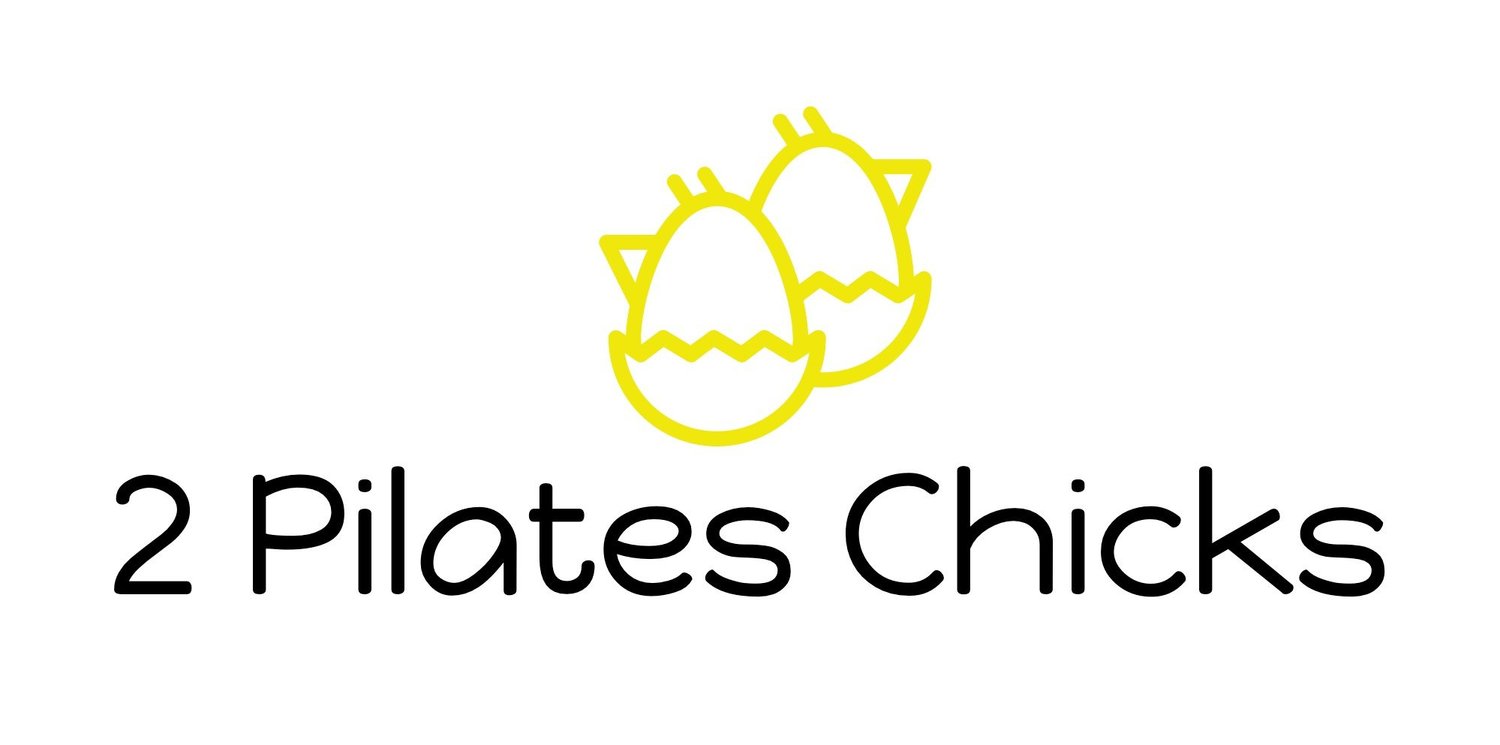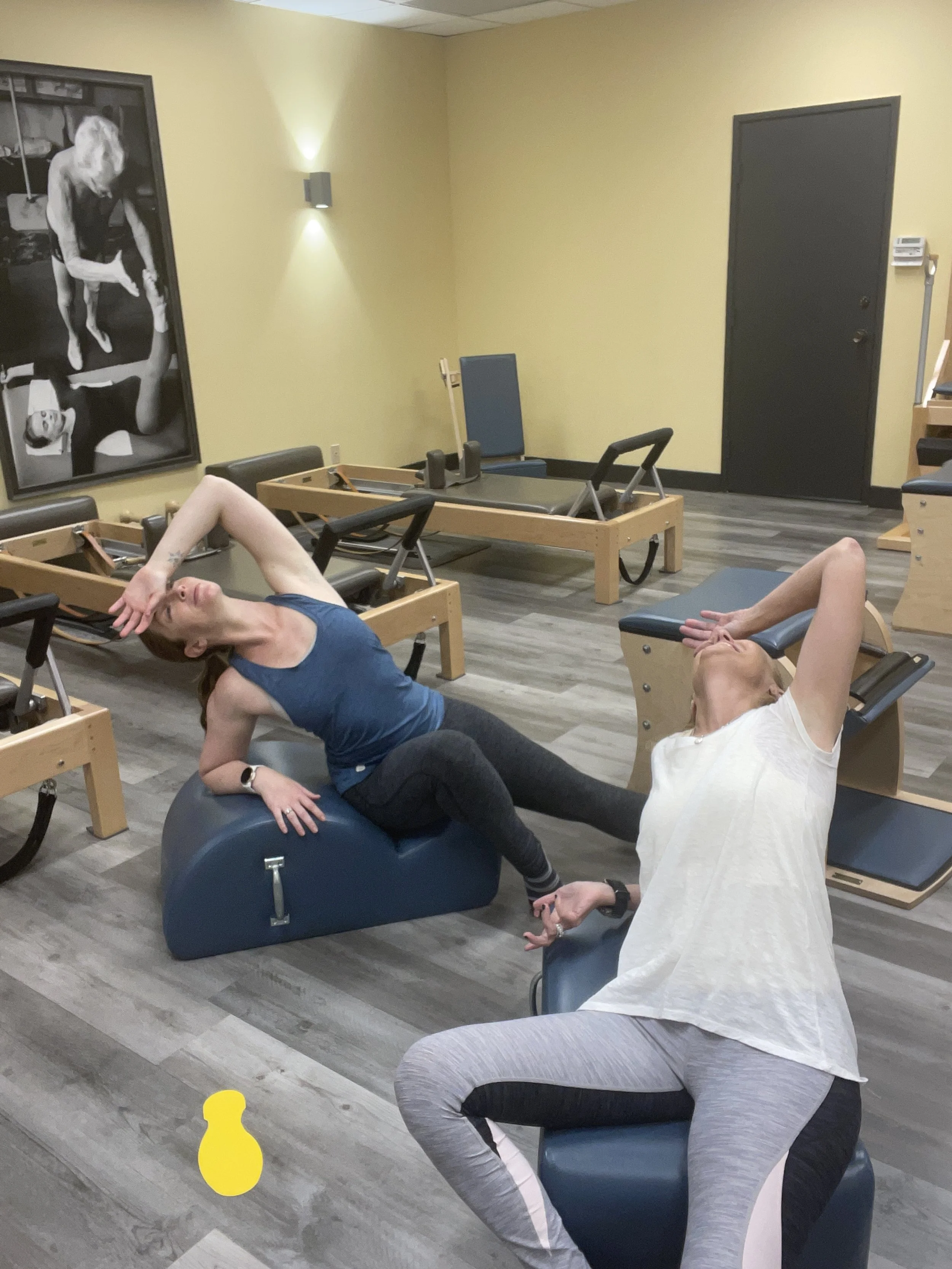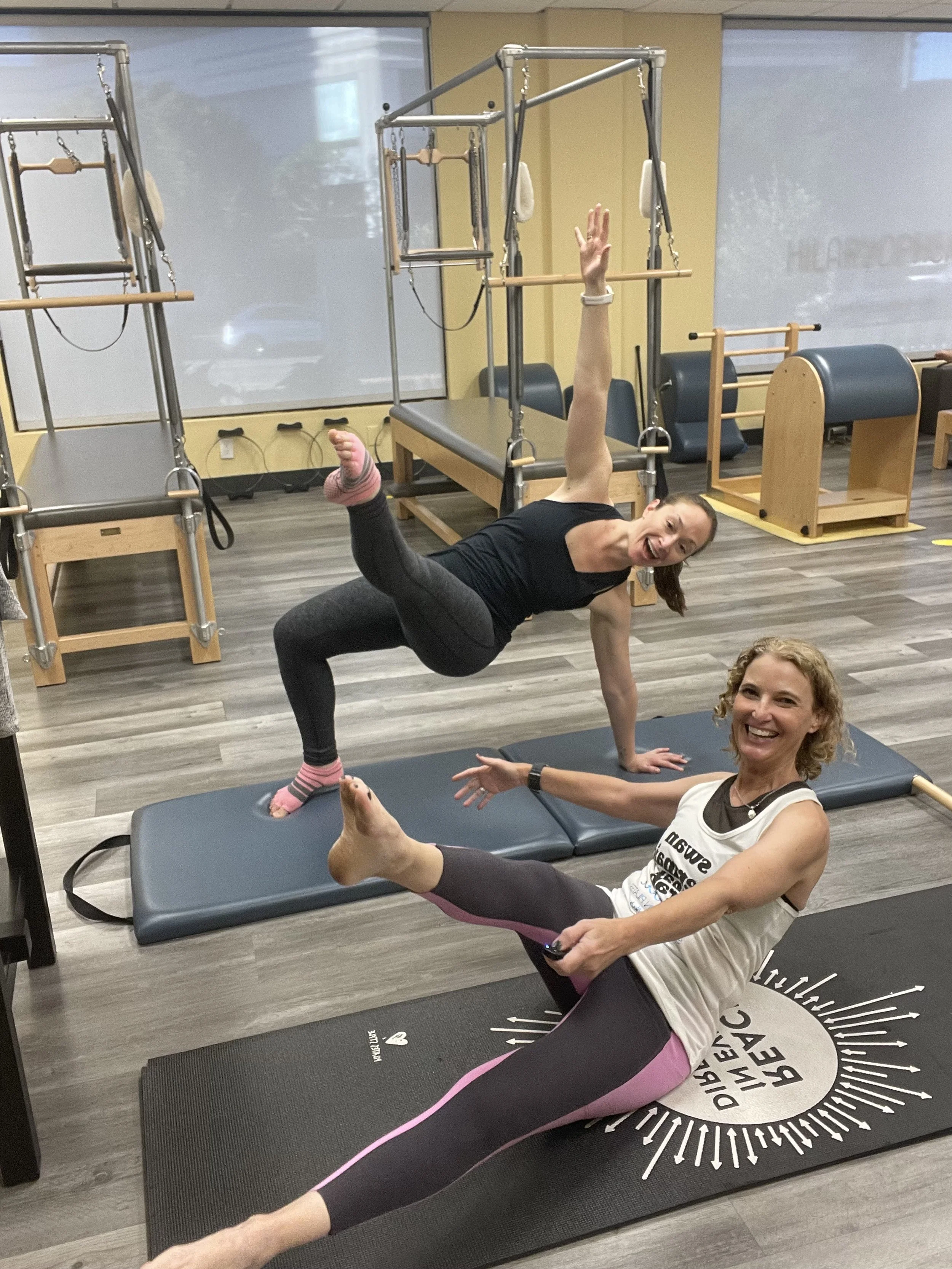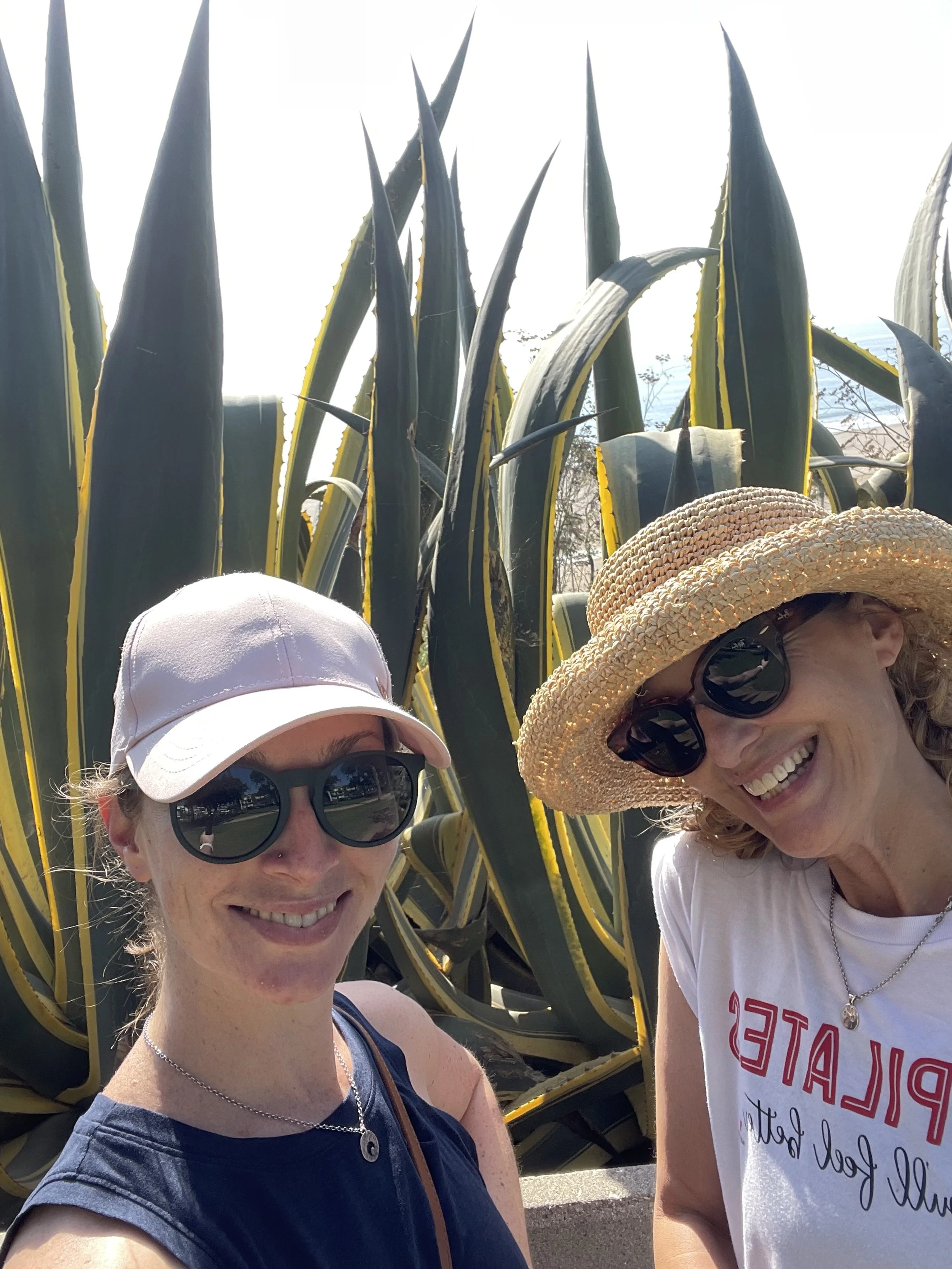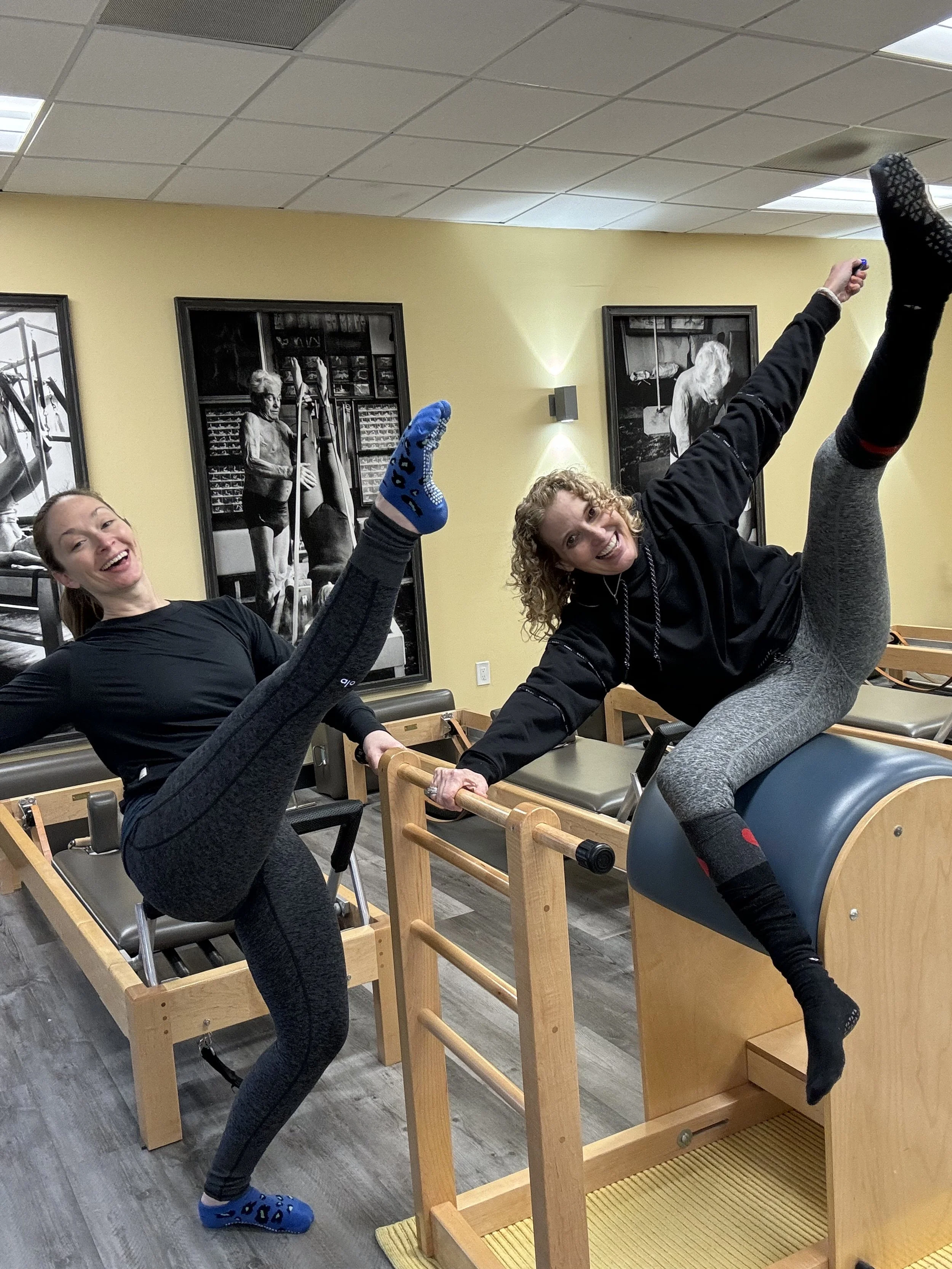What are the realities of Pilates Teacher Training
What are your expectations of a Pilates teacher training program? Do you know what a program should include? Do you know the difference between a Pilates teacher that has a certificate of completion versus a certification?
There is a lot of confusion around choosing the right teacher training program for aspiring Pilates teachers. Once someone decides they want to become a Pilates professional they need to find the best training program for their needs and their future career goals. There are many variables to take into consideration when deciding on a program.
In the episode “The Realities of Teacher Training“ S4E15, we discuss what to expect in a teacher training program, common misunderstandings, and qualities to look for in a program. We also talk about the certification process and being fully certified versus obtaining a certificate of completion to be able to teach.
Previously, when Pilates was more obscure, there were only a few training programs that student teachers could choose. These days Pilates is not only well known beyond even the fitness world, but also highly regarded throughout athletics, wellness, and clinical rehabilitation practices. There has been a tremendous surge of teacher training programs now available around the world. While the vast options allow prospective student teachers to pick and choose, it also makes it more challenging to find the most appropriate program for each individual.
Students should be aware that each teacher training program can vary significantly but there is only one regulating body for Pilates teachers. While all programs are expected to include a comprehensive overview of Pilates with a minimum of 450 hours of practice time, not all do. There are programs that only teach mat or mat and reformer, and some that are sectioned into units where students can decide to get certificates individually for each piece of apparatus instead of a comprehensive program with the foundations of the entire system. These types of sectioned or more minimal programs sometimes appear more manageable because they have definitive start and end dates, appear shorter in length, and are a cheaper initial cost. However, the end result will be just as expensive, if not more so than a comprehensive program after each unit is accounted for. It can depend on the amount of time and money the individual has initially disposable. However, all programs require a commitment of time, effort, and money.
While there are now many different schools to train through, students must make sure the style of learning suits their needs. Many new student teachers expect certain styles of Pilates or certain learning environments that they may have previously experienced and then are surprised at the amount of work or change of style taught in their program. The industry is saturated with programs, so prospective student teachers must research the specifics of each potential program and ask the program director questions before committing as most programs are nonrefundable and tailored to the specific group of student teachers in the cohort.
Consider the amount of time that the director says it takes to complete the program versus the amount of time you are expecting to finish. Do you simply want to finish a certification quickly to be able to teach group classes as soon as possible? If that's the case there are short programs that are just mat or mat and reformer but be aware that you will be missing large parts of the full Pilates system and will not be qualified to sit for the accredited certifying test or have a job with private clients at a classical studio with full apparatus.
Be aware that the amount of time expected to complete most comprehensive programs can range from 8-16 months to fully complete and can cost multiple thousands of dollars. For student teachers looking for the shorter programs to simply get it done, consider that most clients want experienced teachers with a deeper understanding of the exercises, precautions, and contraindications in order to trust that they will have a safe practice, especially special populations with injuries, chronic pain, older clients, or athletes with specific needs. Those special populations clients generally do not want to train with teachers who have only learned for a few weekends or a quarterly program, and this can limit teachers who have opted for the quicker, less comprehensive programs.
Understand there are now many varying styles of Pilates and Pilates-based exercise. Some programs advertise as a Pilates teacher training program but are not actually teaching Pilates but rather the studio or program director's style. Programs that aren't teaching the foundations of Pilates, whether that's classical, traditional, or contemporary, may only qualify teachers to be able to teach at that specific studio and not other studios or gyms that specialize in typical Pilates and will expect their teachers to be able to teach and understand true Pilates. Confirm that the program is a Pilates style that works for your body, your background in movement, and your expectations of how you want to teach Pilates.
Also, consider the studio environment you will be learning in. Do you prefer small groups or larger groups, strictly guided programs or more self-directed, deeply diving into the work, or simply learning choreography? Look at how the lead teacher and studio match those needs.
Make sure the director of the program and/or the lead teacher is someone who is trustworthy, has been teaching for a long time, is well-established in a movement-based career, and teaches in a style that works for you. Make sure you feel comfortable with their philosophies of teaching, style of Pilates, and their attitude and energy. Is their teaching style one that speaks to you and works for your body and understanding to build forward? Student teachers will spend many hours with the studio director or program lead teacher, and their style will lay a foundation for the student teacher's career.
People flourish in different environments which is why it is so important to find the right studio, program, and mentor teacher that makes the most sense for each individual student teacher. Our understanding of Pilates and expectations of how to teach can and will change over time, especially as we move farther along the teacher training path and learn more. Whichever program is chosen, be prepared to fully commit time and effort to it in order to get the most out of the program to become a good representative of the Pilates industry, teaching safe, effective, and appropriate classes for the clients that come to us for Pilates and guidance.
One of the major points of confusion with Pilates teacher training programs is the idea of certifications. Even teachers who have been in the industry for many years still have confusion over this point. In Pilates, as of this writing, there is only one NCCA-accredited certifying body for Pilates teachers. This is currently the National Certification Pilates Program (NPCP). After the student teacher completes their teacher training program they receive a certification of completion. That new teacher is now able to teach Pilates, but NOT a certified teacher. A Pilates teacher is only certified if they then after finishing their program, sit for and pass the NPCP exam, and only then are they a Nationally Certified Pilates Teacher (NCPT). Many training programs and studios advertise that they certify teachers, but legally they do not. Only the nationally accredited program, the NPCP, can certify Pilates teachers.
Now, there are many arguments for and against becoming certified depending on who is being asked. Teachers can get jobs without having the national certification. However, some studios do require their teachers to have the NCPT designation to be eligible to apply for a job. Simultaneously, if a Pilates teacher wants to work in a clinical environment it may be required, and if a teacher desires to deepen their career with a secondary degree such as a Master's degree, or subsequent certifications, many of those programs also require an accredited certificate to be eligible, which for Pilates is currently only from the NPCP.
For these reasons, it is important for student teachers to be aware of the differences in completing a teacher training program thus obtaining a certificate of completion, versus being a certified Pilates teacher. Depending on the individual teacher's future career goals it is necessary for student teachers to understand the requirements to be eligible to sit for the NPCP exam, this understanding can guide what program a student chooses. For those student teachers who think they may want to sit for the exam at some point in the future, they must choose a program that is fully comprehensive, has a minimum of 450 hours of training, and includes lecture lessons including but not limited to the history of Pilates, anatomy, and special populations, as well as hours of guided practice teaching under an experienced teacher, self-directed practice, and observation hours of a certified teacher. Teacher training programs that do not include all of the above do not qualify their student teachers to be certified. Does the potential program prepare you for the NPCP exam and give you the option of sitting for the exam if you should so choose when you are finished with the training program?
For the industry as a whole, encouraging as many Pilates teachers as possible to be certified elevates the profession, increases trust from allied healthcare professionals and other fitness professionals with whom we collaborate, and improves understanding and trust from clientele.
Overall, teacher training programs are expensive, time-consuming, and take dedicated effort regardless of which program is chosen. Investing the time and effort to learn the full system and develop the foundations of movement comprehension will only set teachers up for success as they continue on with their careers, regardless of the path they develop. Starting with a strong foundation sets teachers up for greater success and a higher earning potential, and this can depend on the initial training program.
It is also important for the teacher training programs to be clear and forthcoming with the students on what they expect of the student, what they offer, and where the teacher will be capable of working when the program is complete. If you want to teach Pilates in a full studio one day make sure that that program will cover all the apparatus and exercises that would be needed for you to continue in that environment.
Look over the program applications and ask these questions about the teacher training program. Go to the studio to experience the environment and meet the lead teacher or director who will be teaching the program. Understand that the reality is it will be hard work, take time, and be challenging, but building a strong foundation from the start will set you up for success. Invest in yourself, explore your options, and look at the big picture of potential paths as a career develops over the years, not only the challenging training years as a student teacher or new teacher.
Teaching Pilates is a continuous journey, and once we're done with our teacher training programs that doesn't mean we are finished learning. To be a teacher means to be a lifelong student. Teaching Pilates requires an evidence-based practice that is updated with changing science and kinesiological understanding. We must start with a strong foundation to continue building upon in order to best care for our clients to build a strong Pilates practice for a long, successful career.
